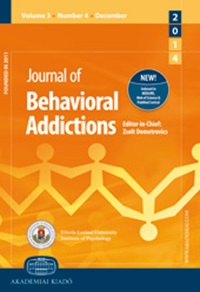Comparative analysis of cortical anatomy in male participants with internet gaming disorder or tobacco use disorder: Insights from normative modeling.
IF 6.6
1区 医学
Q1 PSYCHIATRY
引用次数: 0
Abstract
Background Research on individual differences in brain structural features of internet gaming disorder (IGD) and established addictions such as tobacco use disorder (TUD) is currently limited. This study utilized normative modeling to analyze the cortical thickness (CT) development patterns of male patients with IGD and TUD, aiming to provide further insights into whether IGD qualifies as an addiction. Methods Surface-based brain morphometry (SBM) was used to calculate CT from T1-weighted magnetic resonance imaging data of 804 male participants (665 healthy individuals, 68 IGD and 71 TUD). Gaussian process regression was employed to generate normative models of CT development. Deviation maps were produced to depict deviations of IGD and TUD participants from the typical developmental patterns. Results Both addiction groups exhibited widespread cortical thinning, particularly in regions such as the bilateral temporal pole and medial orbitofrontal cortex. The TUD group demonstrated a higher degree of individualization and limited spatial overlap compared to the IGD group. Opposite trends in CT changes were observed between the two groups in the bilateral pericalcarine cortex and pars triangularis. Conclusions These findings regarding the similarities and differences between IGD and TUD provide support for the idea that IGD shares common features with substance-related addictions and contribute to a deeper understanding of the neural mechanisms underlying IGD.对患有网络游戏障碍或烟草使用障碍的男性参与者的大脑皮层解剖进行比较分析:规范建模的启示
背景目前,有关网络游戏障碍(IGD)和烟草使用障碍(TUD)等已确定成瘾的大脑结构特征个体差异的研究十分有限。本研究利用常模分析了男性 IGD 患者和 TUD 患者的皮层厚度(CT)发育模式,旨在进一步了解 IGD 是否属于成瘾。采用高斯过程回归法生成 CT 发展的规范模型。结果两个成瘾组都表现出广泛的皮质变薄,尤其是在双侧颞极和内侧眶额皮质等区域。与 IGD 组相比,TUD 组表现出更高程度的个体化和有限的空间重叠。结论:这些关于 IGD 和 TUD 之间异同的研究结果为 IGD 与药物相关成瘾具有共同特征的观点提供了支持,并有助于加深对 IGD 神经机制的理解。
本文章由计算机程序翻译,如有差异,请以英文原文为准。
求助全文
约1分钟内获得全文
求助全文
来源期刊

Journal of Behavioral Addictions
PSYCHIATRY-
CiteScore
12.30
自引率
7.70%
发文量
91
审稿时长
20 weeks
期刊介绍:
The aim of Journal of Behavioral Addictions is to create a forum for the scientific information exchange with regard to behavioral addictions. The journal is a broad focused interdisciplinary one that publishes manuscripts on different approaches of non-substance addictions, research reports focusing on the addictive patterns of various behaviors, especially disorders of the impulsive-compulsive spectrum, and also publishes reviews in these topics. Coverage ranges from genetic and neurobiological research through psychological and clinical psychiatric approaches to epidemiological, sociological and anthropological aspects.
 求助内容:
求助内容: 应助结果提醒方式:
应助结果提醒方式:


